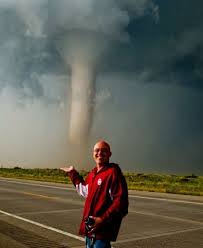
Breaking News
 Avengers: Doomsday | Only in Theaters December 18, 2026
Avengers: Doomsday | Only in Theaters December 18, 2026
 Here Are 5 Wars Trump Started or Expanded in 2025
Here Are 5 Wars Trump Started or Expanded in 2025
 Everyone's a Lender Now: Shadow Banking USA
Everyone's a Lender Now: Shadow Banking USA
 General Flynn Will Issue An Emergency Message To President Trump And The American People...
General Flynn Will Issue An Emergency Message To President Trump And The American People...
Top Tech News
 Laser weapons go mobile on US Army small vehicles
Laser weapons go mobile on US Army small vehicles
 EngineAI T800: Born to Disrupt! #EngineAI #robotics #newtechnology #newproduct
EngineAI T800: Born to Disrupt! #EngineAI #robotics #newtechnology #newproduct
 This Silicon Anode Breakthrough Could Mark A Turning Point For EV Batteries [Update]
This Silicon Anode Breakthrough Could Mark A Turning Point For EV Batteries [Update]
 Travel gadget promises to dry and iron your clothes – totally hands-free
Travel gadget promises to dry and iron your clothes – totally hands-free
 Perfect Aircrete, Kitchen Ingredients.
Perfect Aircrete, Kitchen Ingredients.
 Futuristic pixel-raising display lets you feel what's onscreen
Futuristic pixel-raising display lets you feel what's onscreen
 Cutting-Edge Facility Generates Pure Water and Hydrogen Fuel from Seawater for Mere Pennies
Cutting-Edge Facility Generates Pure Water and Hydrogen Fuel from Seawater for Mere Pennies
 This tiny dev board is packed with features for ambitious makers
This tiny dev board is packed with features for ambitious makers
 Scientists Discover Gel to Regrow Tooth Enamel
Scientists Discover Gel to Regrow Tooth Enamel
 Vitamin C and Dandelion Root Killing Cancer Cells -- as Former CDC Director Calls for COVID-19...
Vitamin C and Dandelion Root Killing Cancer Cells -- as Former CDC Director Calls for COVID-19...
Did you know 'storm spotters' in your community keep you safe during severe weather?

Weather radar showing a hurricane (Photo: NOAA)
Civic minded citizen scientists in your community help meteorologists and the National Weather Service stay abreast of inclement weather with on-the-ground data.
Earlier this week, the Midwest and Northeast were slammed with tornados and thunderstorms that grounded planes and held up trains. Thousands of people along the Northeast corridor lost power as a result.
During such hazardous weather, we rely on the knowledge, skill and expertise of meteorologists and designated emergency personnel to keep us safe and in the know. They in turn rely on data supplied by not just satellites and doppler radars but also – a network of citizen scientists.
But wait. With all our sophisticated technology, what could a few volunteers possibly contribute?
"Radars can tell us that there is heavy snowfall, but radars don't tell us how much, or if rain is mixing with the snow, or what damage is occurring. Our spotters do," explains Tanja Fransen Warning Coordination Meteorologist with the National Weather Service in Glasgow, Montana.
The 'spotters' she is referring to, also Skywarn's 'storm spotters' are a national network of over 350,000 volunteers who work with their local emergency and weather centers to monitor and report inclement weather. Skywarn was a response to the Palm Sunday Tornado Outbreak a particularly devastating series of tornadoes that ripped through Midwestern states in 1965[1] Overseen by NOAA's National Weather Service, the Skywarn program trains citizens to identify severe storms and provide accurate reports of storm developments and effects.




